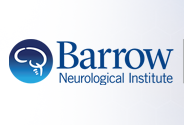ABT-737 synergizes with bortezomib to induce apoptosis, mediated by Bid cleavage, Bax activation, and mitochondrial dysfunction in an Akt-dependent context in malignant human glioma cell lines
Document Type
Article
Abstract
We observed that glioma cells are differentially sensitive to N-{4-[4-(4'-chloro-biphenyl-2-ylmethyl)-piperazin-1-yl]-benzoyl}-4-(3-dimethylamino-1-phenylsulfanylmethyl-propylamino)-3-nitro-benzenesulfonamide (ABT-737) and administration of ABT-737 at clinically achievable doses failed to induce apoptosis. Although elevated Bcl-2 levels directly correlated with sensitivity to ABT-737, overexpression of Bcl-2 did not influence sensitivity to ABT-737. To understand the molecular basis for variable and relatively modest sensitivity to the Bcl-2 homology domain 3 mimetic drug ABT-737, the abundance of Bcl-2 family members was assayed in a panel of glioma cell lines. Bcl-2 family member proteins, Bcl-xL, Bcl-w, Mcl-1, Bax, Bak, Bid, and Noxa, were found to be expressed ubiquitously at similar levels in all cell lines tested. We then examined the contribution of other apoptosis-resistance pathways to ABT-737 resistance. Bortezomib, an inhibitor of nuclear factor-kappaB (NF-κB), was found to enhance sensitivity of ABT-737 in phosphatase and tensin homolog on chromosome 10 (PTEN)-wild type, but not PTEN-mutated glioma cell lines. We therefore investigated the association between phosphatidylinositol 3-kinase (PI3K)/Akt activation and resistance to the combination of ABT-737 and bortezomib in PTEN-deficient glioma cells. Genetic and pharmacological inhibition of PI3K inhibition sensitized PTEN-deficient glioma cells to bortezomib- and ABT-737-induced apoptosis by increasing cleavage of Bid protein, activation and oligomerization of Bax, and loss of mitochondrial membrane potential. Our data further suggested that PI3K/Akt-dependent protection may occur upstream of the mitochondria. This study demonstrates that interference with multiple apoptosis-resistance signaling nodes, including NF-κB, Akt, and Bcl-2, may be required to induce apoptosis in highly resistant glioma cells, and therapeutic strategies that target the PI3K/Akt pathway may have a selective role for cancers lacking PTEN function.
Medical Subject Headings
Annexins (metabolism); Antineoplastic Agents (pharmacology); Apoptosis (drug effects); BH3 Interacting Domain Death Agonist Protein (metabolism); Biphenyl Compounds (pharmacology); Blotting, Western; Boronic Acids (pharmacology); Bortezomib; Cell Line, Tumor (metabolism); Cell Proliferation; Drug Synergism; Glioma (metabolism, pathology); Humans; Mitochondrial Diseases (metabolism); NF-kappa B (metabolism); Nitrophenols (pharmacology); Piperazines (pharmacology); Proto-Oncogene Proteins c-akt (metabolism); Pyrazines (pharmacology); Sulfonamides (pharmacology); bcl-2-Associated X Protein (metabolism)
Publication Date
6-1-2012
Publication Title
The Journal of pharmacology and experimental therapeutics
E-ISSN
1521-0103
Volume
341
Issue
3
First Page
859
Last Page
72
PubMed ID
22393246
Digital Object Identifier (DOI)
10.1124/jpet.112.191536
Recommended Citation
Premkumar, Daniel R.; Jane, Esther P.; DiDomenico, Joseph D.; Vukmer, Natalie A.; Agostino, Naomi R.; and Pollack, Ian F., "ABT-737 synergizes with bortezomib to induce apoptosis, mediated by Bid cleavage, Bax activation, and mitochondrial dysfunction in an Akt-dependent context in malignant human glioma cell lines" (2012). Neurosurgery. 2162.
https://scholar.barrowneuro.org/neurosurgery/2162


